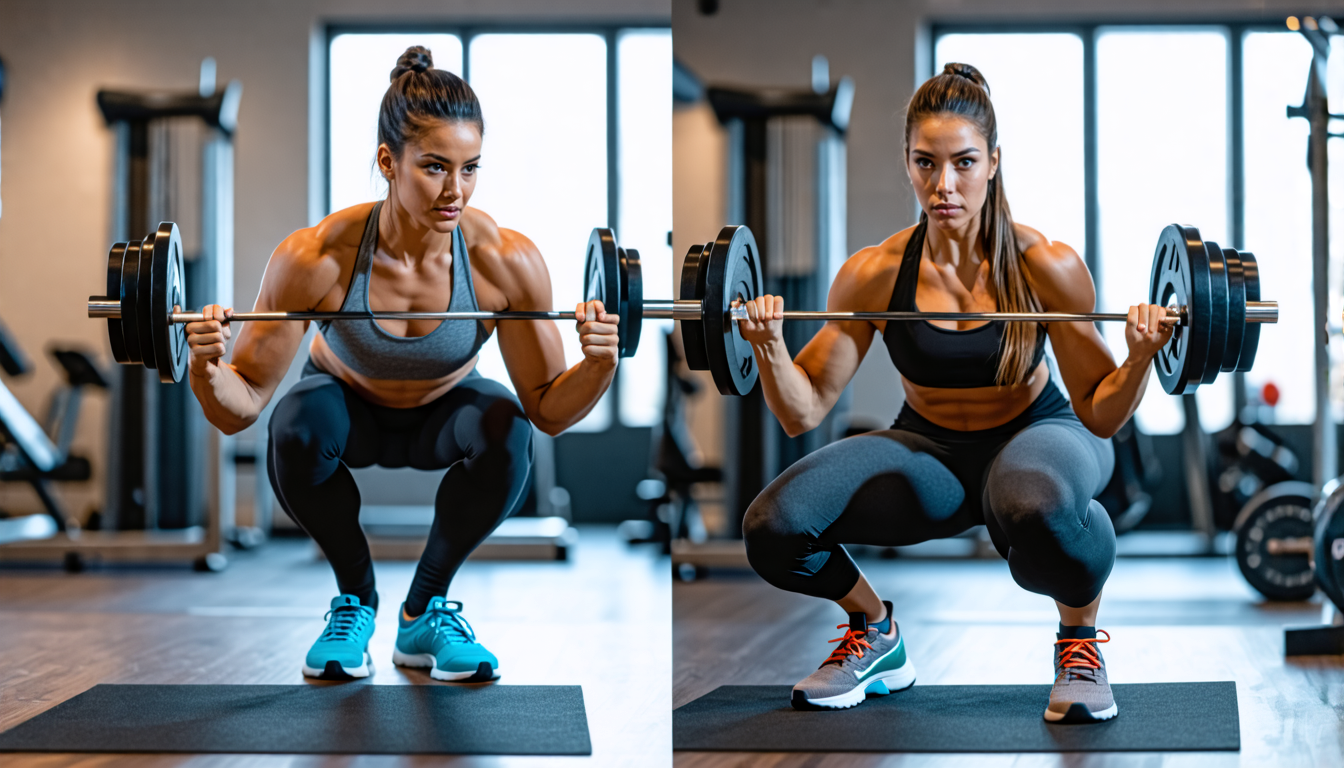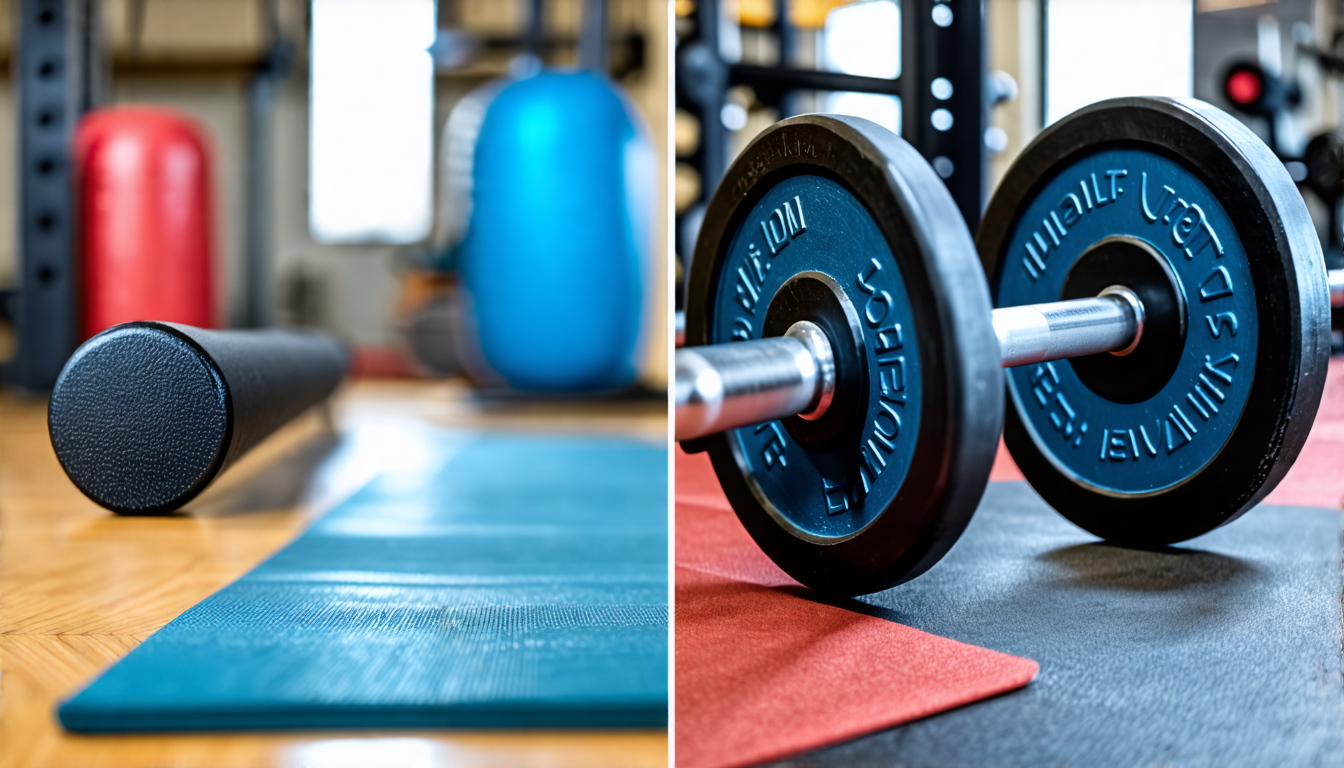If you’re setting up a home fitness bar, it’s essential to know the differences between weighted fitness bars and regular bars to ensure you have the right equipment for your workout routines. Weighted fitness bars are specialized pieces of exercise equipment designed to help individuals increase strength, improve balance, and enhance overall fitness. Unlike regular bars, which are typically used as free weights in exercises like squats and bench presses, weighted fitness bars come with a fixed weight usually distributed evenly across the bar. They are often made from high-quality materials such as steel or heavy-duty plastic and come with a padded exterior for comfort and grip.
Understanding the differences between these two types of bars can greatly impact the effectiveness of your home workouts. Weighted fitness bars offer a unique advantage in that they can be used for a variety of exercises ranging from strength training to cardio routines, making them suitable for all fitness levels. Because they come in various weights, they can be used for everything from light conditioning to more intense strength training, catering to a broad audience from beginners to advanced fitness enthusiasts.
When comparing weighted fitness bars to regular bars, the weight distribution and versatility are key factors. Weighted fitness bars provide a more even distribution of weight, allowing for smoother movements in various exercises. This versatility makes them a popular choice for home fitness bars where space and equipment variety might be limited. Furthermore, the durability and design of weighted fitness bars are tailored for consistent use; they are built to withstand drops and intense use without bending or breaking, unlike some regular bars that may need constant adjustments or replacements due to wear and tear.
In your home gym, choosing the right type of bar can make a significant difference in your workout efficiency and safety. Weighted fitness bars, with their specialized design and durability, offer an all-encompassing solution for home fitness, ensuring that you get the most out of your exercise routines.
Understanding Weighted Fitness Bars
Definition and Composition:
Weighted fitness bars, often referred to as body bars or exercise bars, are versatile pieces of equipment used extensively in home fitness routines. Unlike regular bars found in a gym, which are typically designed to hold weight plates, weighted fitness bars are pre-loaded with a specific weight. This design eliminates the need for adjusting weights and makes these bars incredibly user-friendly.
The composition of weighted fitness bars is meticulously designed to ensure durability and safety during workouts. The core of most weighted fitness bars is typically made from materials such as solid steel or iron, providing a stable and robust structure. Surrounding this core is a layer of protective coating, which can be made from vinyl, rubber, or foam. This coating not only adds a layer of safety—preventing the bar from slipping during exercises—but also enhances comfort, making it easier on the hands and reducing the risk of calluses or blisters.
Primary Uses:
Weighted fitness bars are highly adaptable and can be incorporated into a wide range of exercises, making them a staple in many home fitness regimes. They are frequently used in fitness classes such as BodyPump, barre, and Pilates, as well as individual workout routines. Some of the common exercises performed with weighted fitness bars include squats, lunges, overhead presses, and curls. Their balanced weight distribution makes them perfect for full-body workouts, muscle toning, and strength training.
One of the great benefits of weighted fitness bars is their appeal to a broad audience. They are suitable for various fitness levels—from beginners to advanced athletes. For newcomers or those returning to exercise after a break, the simplicity and safety of weighted fitness bars provide an excellent introduction to strength training. The fixed weights eliminate the complexity of adjusting plates, allowing users to focus on form and technique. More experienced fitness enthusiasts can use these bars to complement their existing routines, adding variety and increasing resistance as needed.
Moreover, the accessibility of weighted fitness bars makes them ideal for home fitness. They are compact and easy to store, which is perfect for individuals with limited space. Additionally, their easy-to-use nature encourages consistency in workout routines, an essential aspect of achieving fitness goals. Whether you are integrating them into a comprehensive home gym setup or simply using them for daily workouts, weighted fitness bars are a versatile tool that can cater to myriad fitness needs and preferences.

Comparing Weighted Fitness Bars to Regular Bars
Weight Distribution and Versatility
When comparing weighted fitness bars to regular bars, a significant factor to examine is weight distribution. Weighted fitness bars are typically designed with a uniform weight distribution throughout the entire length of the bar. This makes them ideal for exercises that require balanced and consistent resistance, which is especially useful in home fitness environments. In contrast, regular bars, like Olympic or standard barbells, often have weight plates added to each end, creating a central point of balance that can shift depending on the exercise performed or the weight used.
This consistent weight distribution of weighted fitness bars adds to their versatility in exercises. These bars are perfect for a wide array of movements, ranging from strength training exercises like squats, lunges, and presses to flexibility and balance routines such as yoga and Pilates. Their balanced weight allows users to maintain proper form easily, reducing the risk of injury—a crucial point for both beginners and those performing home workouts where professional supervision might not be available.
On the other hand, regular bars are generally more suited for heavy lifting and powerlifting exercises. Their design allows for a more dynamic load, enabling the lifter to adjust resistance by adding or removing weight plates. This makes regular bars exceptionally versatile for progressive strength training, where the lifter aims to continually increase the weight they can handle. However, this also means that regular bars might not be as well-suited for exercises that require a consistent weight distribution all along the bar, limiting their use in a more diversified workout routine.
Durability and Design
The durability of the materials used in both weighted fitness bars and regular bars plays a significant role in their longevity and performance. Weighted fitness bars are usually crafted from high-quality steel or iron and often encased in a rubber or foam coating. This coating not only makes the bar more comfortable to grip but also protects it from damage and wear and tear, which is especially beneficial for home fitness enthusiasts. The rubber or foam encasement further adds a layer of protection for home gym surfaces, as it minimizes the risk of scratching or denting floors.
Regular bars, particularly those used in commercial gyms, are often built from hardened steel, sometimes with a chrome or zinc finish for added durability. These bars are designed to handle heavy loads and repeated use, making them extremely durable. However, for home fitness users, this higher durability might come at the cost of added maintenance, such as regular cleaning to prevent rust and more frequent inspections to ensure safety when handling heavier weights.
In terms of design differences, one of the most noticeable aspects is the diameter and length of the bars. Weighted fitness bars generally have a uniform and often narrower diameter, designed for easy grip regardless of the weight. This design allows users to perform a variety of exercises comfortably, making them an excellent option for at-home workouts where space and equipment versatility are highly valued.
Regular bars, especially Olympic bars, tend to be longer and have rotating sleeves at the ends to accommodate weight plates. This design is invaluable for lifts like the clean and jerk or snatch, where the rotating sleeves reduce the torque on the lifter’s wrists. However, the longer length and need for additional weight plates mean that regular bars require more space and investment in complementary equipment, factors that home fitness enthusiasts must consider.
Moreover, the design impacts overall performance. Weighted fitness bars streamline functional training, offering a one-piece solution that enhances form and balance during exercises. Their straightforward structure eliminates the need to frequently adjust weight loads, thus making transitions between exercises quicker and more efficient—an essential feature for maintaining a smooth, uninterrupted workout flow at home.
In conclusion, the differences between weighted fitness bars and regular bars extend beyond just appearance and weight capacity. Each type of bar brings its unique benefits and limitations, directly influencing your home fitness routine’s adaptability, safety, and effectiveness. As you plan or enhance your home gym, considering these factors will help you choose the right equipment to meet your fitness goals.
In conclusion, weighted fitness bars provide a unique and versatile option for those looking to enhance their workout routines, especially in a home fitness setting. Composed typically of durable materials and designed to distribute weight evenly, these bars cater to a range of exercises and fitness levels, making them accessible yet challenging for both beginners and advanced users.
Compared to regular bars, weighted fitness bars offer a distinct advantage in terms of versatility, allowing users to perform a diverse array of movements with minimal additional equipment. Moreover, their thoughtful design not only contributes to their robustness but also ensures a more balanced and efficient workout experience.
Integrating weighted fitness bars into a home fitness setup can be particularly beneficial. They occupy less space compared to traditional weights and machines while still delivering a comprehensive workout. For those looking to create or enhance an at-home gym, these bars present an effective, space-saving solution that can adapt to various fitness goals and routines. Thus, whether you are just starting on your fitness journey or seeking to diversify your home workout regimen, weighted fitness bars are a worthwhile investment to consider.

